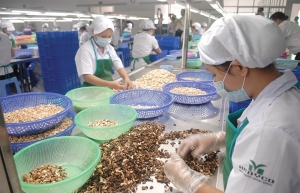CPTPP is diplomatic success – but can deliver more
Signatory countries have agreed to cooperate on regulations and standards, thus reducing non-tariff barriers. They have accepted common obligations on food regulations, environmental protections, the digital economy, and regulations governing investment, labour, financial services, and other sectors. In addition, member countries have agreed to exchange information on state-owned enterprises, as they could be a source of unfair competition.
 |
| Patrick Lenain, senior associate Council on Economic Policies |
As a modern trade agreement, the CPTPP includes provisions to liberalise trade in services and in digital data. The agreement also helps to remove digital barriers, like data localisation requirements.
Financial services are included, allowing banks to operate in other member countries on a level playing field with domestic firms, while it also includes rules to protect investors from unfair, arbitrary, or discriminatory treatment.
Five years on, there is no doubt that Vietnam has increased its exports to the CPTPP 500-million customer market, and it has gained greater access to consumers in Australia, Canada, Japan, and Mexico.
According to the International Monetary Fund’s Direction of Trade Statistics, exports of merchandises to CPTPP members increased by an impressive 42 per cent since the agreement entered into force. This is an illustration of a general increase in intra-CPTPP trade. For example, Vietnamese exports to Canada almost doubled in five years to reach over $6 billion last year. While impressive, Canada remains a small market for Vietnamese exporters relative to the United States and China. What is more, almost half of these exports to Canada are electronic equipment, such as Samsung and Apple smartphones – a lack of diversification that can be risky in the case of changing consumer preferences.
Exports to Australia have also increased fast, with about $5.6 billion sold by Vietnamese exporters last year. The pattern is similar, with a strong concentration in consumer electronics such as mobile telephone and only limited diversification outside this category. Exports to Japan represent a more impressive value of $24 billion, but with little gain since the entry into force of the CPTPP.
Meanwhile, Vietnam’s exports outside the CPTPP trading bloc have increased fast – in fact even faster – with a growth rate of 49 per cent since 2018. Most impressively, exports to the United States have more than doubled during this period and now approach $100 billion. Vietnamese exports to China of about $60 billion outweigh the sales to any of the member countries.
Because it excludes key players such as China and the United States, the CPTPP fails to imprint a strong impulse onto Vietnam’s economy. The share of exports to the trading bloc is only 15 per cent, whereas exports to China and the United States alone account for almost half of the country’s total exports.
Of course, small gains matter – and access to new markets may be a crucial milestone for individual exporters – but the integration of Vietnam in global value chains is mostly driven by its trade with China and the United States.
While the gains achieved by the CPTPP may seem modest at present, this could change in the future. The accession of new members, such as the United Kingdom, has the potential to elevate the CPTPP to a more prominent position in the global trading landscape. However, it is important to acknowledge the challenges that CPTPP faces. For instance, the likelihood of China joining the agreement remains low, and the prospect of a reversal of the United States’ decision seems improbable under present circumstances.
Improving the functioning of the CPTPP could help. It lacks a secretariat – such as the European Commission Directorate-General for Competition – in charge of monitoring and enforcing trade rules and preventing anti-competitive behaviour. What is more, the CPTPP dispute-settlement mechanism is rarely used, reducing the incentive to avoid discriminatory measures.
In the meantime, Vietnamese exporters could do more to fully take advantage of the CPTPP and boost their exports. As an illustration, exporters should always provide certificates of origin complying with the trade agreement’s provisions. To take advantage of low tariffs granted under the trade treaty, exporters need to show evidence of minimum content originating from member nations.
As they get more familiar with the CPTPP, Vietnamese firms will learn to take advantage of its provisions and expand their reach to customers overseas. However, these procedures are time-consuming and costly for small- and medium-sized enterprises, which would benefit from help to improve their export readiness.
As recommended by the Organisation for Economic Co-operation and Development, the relevant ministries and government agencies should broaden their support to such businesses in export promotion by providing market information, access to export consultancy, and opportunities for business programmes.
By proactively leveraging the CPTPP and collaborating with other governments to expand its membership and strengthen implementation, Vietnam can chart a path of sustained economic integration on the global stage. Through strategic partnerships, it can unlock the full potential of the CPTPP, facilitating greater access to international markets and fostering economic growth.
By prioritising inclusive policies and equitable distribution of benefits, Vietnam can ensure that the rewards of global economic integration are shared among all citizens, contributing to widespread prosperity and improved welfare of the people.
 | CPTPP milestone marks nation’s economic integration Vietnam is celebrating the fifth anniversary of its participation in the Comprehensive and Progressive Agreement for Trans-Pacific Partnership. Prof. Dr. Andreas Stoffers from the Friedrich Naumann Foundation in Hanoi reflects on the multifaceted impact of this landmark agreement on the nation’s economic landscape. |
 | CPTPP gains to be built on expansion Five years into deployment of the Comprehensive and Progressive Agreement for Trans-Pacific Partnership, many other economies are seeking to join the bloc – which in turn could help Vietnam expand its trade and investment. |
What the stars mean:
★ Poor ★ ★ Promising ★★★ Good ★★★★ Very good ★★★★★ Exceptional
 Tag:
Tag:
Related Contents
Latest News
More News
- Pivotal stage of growth paves way for rise in M&As (December 03, 2025 | 10:00)
- Positive projections for M&A interest from Thailand (December 03, 2025 | 09:40)
- Manifesting the first line of defence in cybersecurity (December 03, 2025 | 09:00)
- The transformational role AI can play in accounting arena (December 03, 2025 | 08:00)
- Unlocking 5G-AI potential in Singapore (December 03, 2025 | 08:00)
- Data-driven strategies vital for a fast-evolving nation (December 02, 2025 | 09:41)
- Policy to practice: how Vietnam can lead the region (November 26, 2025 | 16:03)
- Mobilising private capital at scale vital for climate battle (November 26, 2025 | 15:36)
- VILAF and Yoon & Yang launch Vietnam - Korea Practice Unit (November 26, 2025 | 15:16)
- Trademark disputes challenge foreign firms in Vietnam (November 24, 2025 | 15:30)
























 Mobile Version
Mobile Version